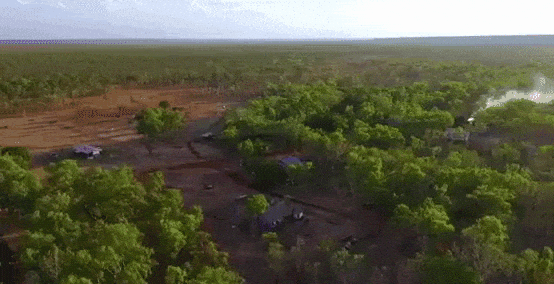Undermined: Tales from the Kimberley tells vital stories about an incredible natural landscape

True to its title, Nicholas Wrathall’s documentary comprises a series of tales taken from across the Kimberley region. These are vital stories that need to be told, writes critic Glenn Dunks.
Australians are a fidgety lot, never settled with their place at the (so called) arse-end of the world. As a people, it is suggested that the white Australian is restless and eager to explore, confined by the ocean on all sides and fare more likely to hop on a plan to Bali or Bangkok, New York or London than they are to take a trip to their own native backyard.
Perhaps that is why in 2019, the Kimberley region in the country’s north is listed as one of the most intact and untouched natural landscapes in the world. We should probably be thankful for that. It’s why many of the stories featured in Nicholas Wrathall’s latest film (he also directed 2013’s Gore Vidal: The United States of Amnesia) remain so vital and yet remarkably untold. And it’s why the issues the people in this part of the world face are so unknown.
It’s thought that the region could hold incredible, untapped potential as a key to Australia’s prosperous future and that it could all be done without the mining companies coming in and stripping it off its history, its beauty and its very essence. That’s not what those in charge think, however, wanting to grant licences for coal and uranium mining along with many, many other minerals. Natural elements that are just sitting in the ground make the Gina Reinharts of the world steep with rage, angry that they’re unable to dig it up, add a few extra zeroes to their bank balances and ruin a natural paradise in the process. How are they meant to inflate their own self-worth if not through the selfish destruction of the planet?

True to its title, Wrathall’s film is a series of stories taken from across the Kimberley, typically told by Indigenous people who have seen white society’s greed and thirst for blood encroach ever closer and closer to the Kimberley’s borders. Having already been denied their millennia-old traditions – they speak of having to phone ahead in order to gain access to country that is repeatedly being purchased by a small number of investors – we hear of how many consider land titles a hollow gesture that’s barely worth the paper they’re printed on. Their rights as traditional custodians mean little to the big businesses attempting to swoop in and strangle the region of what makes it so special.
Beyond the specific cases dotted around the Kimberley region – places like the Nyul Nyul Ranges, James Price Point and Leopold Dams – we hear stories that are far too common. How their desire for the life of their ancestors has butted painfully up against that of the requirements of a modern society where jobs are scarce and the troubles of drink, ice and depression take more and more lives.
Much of Undermined’s power comes from the way it allows these stories a voice. Similar then to last year’s Wik vs Queensland, from director Dean Gibson, it functions partly as an environmental documentary as well as a testimonial and history lesson. Wrathall’s film is not as good as Gibson’s, which is one of the best Australian documentaries. For all of debut cinematographer Mark Jones’ efforts (there are lots of impressive shots of the Australian landscape, often from above and always stunning) some of the through-lines from story to story are not as seamless as they could be. Especially when there are so many interesting paths that go unexplored, particularly around the sheer logistics of managing the area.
Can Undermined convert more people into warriors for the survival of the Kimberley? Like most enviro-docs, it’s hard to gauge how much of it is simply preaching to the choir. However, Wrathall is smart to allow his subjects to tell their stories and hope that at least some viewers are able to hear them.

















